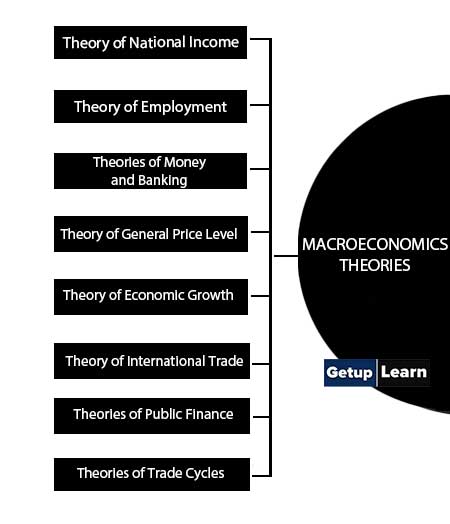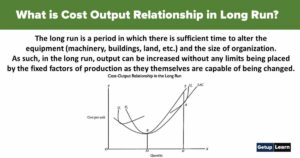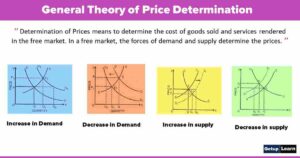Table of Contents
- 1 What is Microeconomics?
- 2 Definition of Microeconomics
- 3 Difference between Microeconomics and Macroeconomics
-
4 Importance of Microeconomics
- 4.1 Price Determination
- 4.2 Helps in Aggregate Study of Economic Problems
- 4.3 It Explains Various Aspects of International Trade
- 4.4 Helps in Individual Decisions
- 4.5 It Teaches the Art of Economizing
- 4.6 It Helps in Regional Policy Formulation
- 4.7 Provides a Base for Business Decision Making
- 4.8 Helpful in Economic Policy Formulation
- 5 Limitations of Microeconomics
- 6 Features of Microeconomics
- 7 What is Macroeconomics?
- 8 Definitions of Macroeconomics
- 9 Macroeconomics Theories
- 10 Importance of Macroeconomics
- 11 Features of Macroeconomics
- 12 FAQ Related to Microeconomics and Macroeconomics
What is Microeconomics?
Microeconomics is the study of the economic actions of individuals and small groups of individuals. Thus microeconomics may be defined as that branch of economic analysis that studies the economic behaviour of the individual unit a person, a household or a firm.

Table of Contents
Definition of Microeconomics
When economic problems or economic issues are studied considering small economic units like an individual consumer, or an individual producer, we are referring to microeconomics.
Following are the definition of microeconomics has been defined by several scholars as follows:
[su_quote cite=”Henderson and Quant”] Microeconomics is the study of the economic actions of individuals and well-defined groups of individuals.[/su_quote]
[su_quote cite=”Ghrdener Ackley”] Microeconomics deals with the division of the total output among industries, products and firms and the allocation of the resources for competitive use. It considers problems of the income distribution. Its interest is in relating prices of particular goods and services.[/su_quote]
[su_quote cite=”Prof. Boulding”] Microeconomics is the study of a particular firm, a particular household, individual price, wages, income, industry and particular commodity.[/su_quote]
[su_quote cite=”Watson”] Microeconomics is the theory of the behaviour of small units, like the consumers, producers and markets.[/su_quote]
[su_quote cite=”Prof. Leftwitch”] Microeconomics is concerned with the economic activities of economic units as consumers, resource owners and business firms.[/su_quote]
Difference between Microeconomics and Macroeconomics
Microeconomics deals with small segments of society. Microeconomics is defined as the study of the behaviour of individual decision-making units, such as consumers, resource owners and firms.
Macroeconomics deals with aggregative economics. Macroeconomics is defined as the study of overall economic phenomena, such as problems of full employment, GNP, savings, investment, aggregate consumption, aggregate investment, economic growth, etc.
These summarise the difference between microeconomics and macroeconomics:
| Basis | Microeconomics | Macroeconomics |
| Definition | Microeconomics studies economic relationships or economic problems of a level of economic units like a specific individual, specific firms, specification industries, etc. | Macroeconomics studies economic relationships or economic problems of the level of the economy as a whole like national income, national savings, total investments, employment etc. |
| Subject matter |
Price determination of goods and services, their allocation for various functions and determination of the remuneration of the resources are its subject matter. | Whereas, its subject matter includes the level of national income, its effective factors and results, income, employment, savings, investments, etc. |
| Basic Concern | Microeconomics is basically concerned with the determination of output and price for an individual firm or industry. | Macroeconomics is basically concerned with the determination of aggregate output and general price level in the economy as a whole. |
| Scope | Its scope is limited to the laws based on marginal analysis. | Whereas, its scope is wide up to the analysis related to the problems of the whole economy. |
| Assumptions | The study of microeconomics assumes that macro variables remain constant; e.g. it is assumed that aggregate output is given while we are studying the determination of output and price of an individual firm or industry. | The study of macroeconomics assumes that micro variables remain constant, e.g. it is assumed that distribution of income remains constant when we are studying the level of output in the economy. |
| Helpful | Microeconomics is helpful for individual units, firms and industries to achieve the optimum level. | Macroeconomics is helpful for the optimum situation of the whole economy and bringing economic stability. |
| Central Issue | The allocation of resources is the central issue in microeconomics. | The level of output (and employment) is the central issue in macroeconomics. |
| Simple / complicated | Microeconomics is simple, as compared to macroeconomics. | Whereas, macroeconomics is more complicated as compared to microeconomics. |
| Use | Microeconomics is used the determination of various policies of a firm or industry and talking decisions about them. | Whereas, macroeconomics is used for the solution of national problems, taking economic decisions at the level, determination of economic policies and policy decisions at the international level. |
| Importance | The importance of this economics is getting reduced, due to increasingly complex problems of the present age. | Whereas, macroeconomics is more useful in the solution of these problems. Hence, the importance of macroeconomics is going on the increase as compared to microeconomics. |
| Examples | Individual Demand, Firm’s Output. | National Income, National Output. |
Importance of Microeconomics
The importance of microeconomics is explained below:
- Price Determination
- Helps in Aggregate Study of Economic Problems
- It Explains Various Aspects of International Trade
- Helps in Individual Decisions
- It Teaches the Art of Economizing
- It Helps in Regional Policy Formulation
- Provides a Base to Business Decision Making
- Helpful in Economic Policy Formulation

Price Determination
Price determination: Microeconomics plays an important role in price determination and volume of production, allocation of resources etc.
Helps in Aggregate Study of Economic Problems
The total economy is constituted of several small units. Hence, after the study of small units, the study of the problem of the total economy becomes easier. Economics studies economics problems whereas in microeconomics, small units are studied, which facilitates understanding the economy and aggregate study of a bigger problem.
It Explains Various Aspects of International Trade
Microeconomics theories explain many aspects of international trade such as the emergence, nature and gains of international trade, the determination of exchange rate, the impact of tariffs on prices etc.
Helps in Individual Decisions
Microeconomics studies the individual units. Hence, economic decisions in respect to individual units may be taken easily, with its help. A consumer may take a decision in what quantity a commodity is to be purchased, at various prices.
Similarly, a firm or an industry can take decisions decision regarding the volume of production at various levels, taking production costs into consideration.
It Teaches the Art of Economizing
Microeconomic principles deal with the economizing of scarce resources and show how to use them efficiently. Microeconomic law, like the law of substitution, shows how a consumer can maximize his satisfaction by equating the ratios of marginal utilities to the prices of different goods which he buys.
Likewise, there is optimum utilization of the factors of production when their marginal products become unequal.
It Helps in Regional Policy Formulation
With the help of microeconomics, the study of a particular area or particular use is possible. With its help, suggestions may be given in the context of problems of any related industry, by the study of government policies.
For example, the problem of the textile industry may be studied, with reference to Government policies and necessary suggestions may be given.
Provides a Base for Business Decision Making
It Provides a Base for Business Decision-making: For example, the knowledge of price theory has its own significance in practical business decision-making and it is useful to a business in determining the price policy. It guides in the attainment of maximum productivity through the optimum allocation of his given resources.
Helpful in Economic Policy Formulation
Microeconomics is useful in the determination of economic policies. The justification of various economic policies of the government is decided, in the contest of their effects on individual units. In these policies, effects on prices, effects on the price of any particular commodity, wages and personal, consumption may be tested.
Limitations of Microeconomics
Microeconomics is very important and useful for economics analysis. However, there are some limitations of microeconomics following:
- Unrealistic and Impractical Assumptions
- Ignorance of Macro Economy
- Unusable for Studies of Certain Economic Problems
- Microeconomics Misleads

Unrealistic and Impractical Assumptions
Microeconomics is based on several unrealistic and impractical assumptions hence the conclusions drawn are not correct and their desired use does not become possible. The entire microeconomics is based on the assumption of full employment even in a short-term analysis, which is unrealistic.
Microeconomic theories assume laissez-faire policy and pure capitalism in their behaviouristic models. Today there is no pure capitalism, so most of the microeconomic theories have no significant relevance to practice. Situations perceived by assumptions like perfect competition, full employment, full dynamism, etc. are not visible in real life.
Ignorance of Macro Economy: Microeconomics studies specific economic units separately from the rest of the whole economy. It explains only a part and not the whole of the working of an economic system. Hence, complete knowledge of specific areas becomes possible but drawing conclusions regarding the whole economy is not possible by it.
Ignorance of Macro Economy
Microeconomics studies specific economic units separately from the rest of the whole economy. It explains only a part and not the whole of the working of an economic system. Hence, complete knowledge of specific areas becomes possible but drawing conclusions regarding the whole economy is not possible by it.
Unusable for Studies of Certain Economic Problems
Microeconomics is not useful for the study of certain economic problems. For solutions and study of modern problems, Government recognizes the national level as the base, which is related to macroeconomics. The intervention of the Government is consistently increasing in various economic activities.
Employment policy, tariff policy, distribution of income and wealth, export-import policy, industrialization, economic planning and population are subjects of national importance. Their study is possible only in macroeconomics and not in microeconomics.
Microeconomics Misleads
Microeconomics misleads when one tries to generalize from the individual behaviour. It is improper to portray the character and behaviour of the aggregate simply by generalizing from the character and behaviour of the individual components.
By assuming independence of wants and production in the system, microeconomics has failed to consider their ‘dependence effect’ on economic welfare.
Features of Microeconomics
Following are concepts and features of microeconomics let’s discussed them:
- Choices of Selection
- Analyzing the Market
- Shows Condition of Market
- To Analyzes Market Failure
- Economic Activity
- Economic Policies
- Micro Foundation

Choices of Selection
The microeconomic study deals with what choices people make, what factors influence their choices and how their decisions affect the goods markets by affecting the price, supply and demand.
Analyzing the Market
One goal of microeconomics is to analyze the market mechanisms that establish relative prices among goods and services and allocate limited resources among alternative uses.
Shows Condition of Market
Microeconomics shows conditions under which free markets lead to desirable allocations.
To Analyze Market Failure
It also analyzes market failure, where markets fail to produce efficient results.
Economic Activity
While microeconomics focuses on firms and individuals, macroeconomics focuses on the sum total of economic activity, dealing with the issues of growth, inflation, and unemployment and with national policies relating to this issue.
Economic Policies
Microeconomics also deals with the effects of economic policies (such as changing taxation levels) on microeconomic behaviour and thus on the aforementioned aspects of the economy.
Micro Foundation
Modern macroeconomics theories have been built upon a micro foundation i.e. based upon basic assumptions about micro-level behaviour.
What is Macroeconomics?

Macroeconomics is the branch of economics studying the behaviour of the aggregate economy at the regional, national or international level. In other words, Macroeconomics is the study of the behaviour of the whole economy or economy as a whole.
It is concerned with the determination of the broad aggregates in the economy, in particular the national output, unemployment, inflation and the balance of payments position.
Definitions of Macroeconomics
These are some definitions of macroeconomics by authors:
[su_quote cite=”Gardna Ackley”]Macroeconomics concerns such variables as the aggregate volume of the output of an economy with the extent to which its resources are employed, with the size of national income and with the general price level.[/su_quote]
[su_quote cite=”Prof. K. E. Boulding”]Macroeconomics deals not with individual quantities as such but with aggregates of their quantities, not with individual incomes, but with national income, not with individual prices, but with price level, not with individual output but with national output.[/su_quote]
[su_quote cite=”M.H. Spencer”]Macroeconomics is concerned with the economy as a whole or a large segment of it. In macroeconomics, attention is focused on such problems as the level of unemployment, the rate of inflation, the nation’s total output and other matters of economy-wide significance.[/su_quote]
Macroeconomics Theories
Macroeconomics largely deals with the following areas of study:
- Theory of National Income
- Theory of Employment
- Theories of Money and Banking
- Theory of General Price Level
- Theory of Economic Growth
- Theory of International Trade
- Theories of Public Finance
- Theories of Trade Cycles

Theory of National Income
Macroeconomics studies the concept of national income, its different elements and the methods of measurement.
Theory of Employment
Macroeconomics studies problems relating to employment and unemployment. It studies different factors determining the level of employment, viz., aggregate supply, aggregate consumption, aggregate investment, aggregate saving, etc.
Theories of Money and Banking
Theories of money and banking like monetary system, credit system, central banking system, international finance and various principles of money and banking, etc. are also studied in macroeconomics.
Theory of General Price Level
Determination of General Price level is also studied under macroeconomics. Problems relating to inflation and deflation are an important component of macroeconomics.
Theory of Economic Growth
Problems relating to economic growth are another important component of macroeconomics. Techniques of development and planning, strategies thereof and schemes for total growth of national income, production, employment etc. are studied in it. Monetary and fiscal policies of the government are also studied in it.
Theory of International Trade
Macroeconomics studies issues relating to international trade. Export, import, exchange rate and balance of payments are the principal issues in this context.
Theories of Public Finance
Public income, public expenditure and taxation are studied in theories of public finance. All these are studied in macroeconomics, from the view of maximum social welfare, principles of public finance and fiscal policy and its effects.
Theories of Trade Cycles
Ups and downs (depression and boom) in economic activities are known as trade cycles. In it, the ups and downs of the economy causes and effects thereof, measures to control them and various principles of trade cycles are studied.
It is to be noted that micro and macroeconomics are not totally independent approaches. In fact, in most cases, macroeconomics aggregates have been derived from theories of individual behaviour:
For example, the theory of aggregate investment, which is a part of macroeconomic theory, is derived from the behaviour of individual entrepreneurs with respect to their investment decision. Moreover, we cannot divide the two terms into watertight compartments.
What is macro from the national angle is micro from the world angle. India’s national income is a macro subject but the from World Bank’s point of view it is a micro subject.
Importance of Macroeconomics

The following points are the importance of macroeconomics:
- It helps to understand the functioning of a complicated modern economic system. It describes how the economy as a whole function and how the level of national income and employment is determined on the basis of aggregate demand and aggregate supply.
- It helps to achieve the goal of economic growth, a higher level of GDP and a higher level of employment. It analyses the forces which determine the economic growth of a country and explains how to reach the highest state of economic growth and sustain it.
- It helps to bring stability to price level and analyses fluctuations in business activities. It suggests policy measures to control Inflation and deflation.
- It explains factors which determine the balance of payment. At the same time, it identifies causes of deficit in the balance of payment and suggests remedial measures.
- It helps to solve economic problems like poverty, unemployment, business cycles, etc., whose solution is possible at the macro level only, i.e., at the level of the whole economy.
- With detailed knowledge of the functioning of an economy at the macro level, it has been possible to formulate correct economic policies and also coordinate international economic policies.
- Last but not the least, is that macroeconomic theory has saved us from the dangers of the application of microeconomic theory to the problems of the economy as a whole.
Features of Macroeconomics
Following are concepts and features of macroeconomics let’s discussed them:
- The term ‘Macro’ has been derived from the Greek word ‘Macros’ meaning ‘large’. Thus Macroeconomics is the study and analysis of an economy as a whole.
- The study of the performance, structures behaviour and decision making of an economy as a whole, rather than individual markets.
- Macroeconomists focus on the national, regional and global scales.
- For most macroeconomics, the purpose of this discipline is to maximize national income and provide national economic growth.
- This growth further increases utility and improves the standard of living for the economy’s participants.
What are microeconomics and macroeconomics?
Microeconomics is the study of individuals, households and firms’ behaviour in decisions making and allocation of resources. It generally applies to markets of goods and services and deals with individual and economic issues. Macroeconomics is a part of the economic study which analyzes the economy as a whole. It is the average of the entire economy and does not study any individual unit or a firm. It studies the national income, total employment, aggregate demand and supply etc.
What is the simple definition of microeconomics?
Microeconomics is the study of the economic actions of individuals and well-defined groups of individuals.
What is the basic definition of macroeconomics?
Macroeconomics concerns such variables as the aggregate volume of the output of an economy with the extent to which its resources are employed, the size of national income and the general price level.
What are limitations of microeconomics?
Following are some limitations of microeconomics following: (1) Unrealistic and Impractical Assumptions, (2) Ignorance of Macro Economy, (3) Unusable for Studies of Certain Economic Problems, (4) Microeconomics Misleads.













